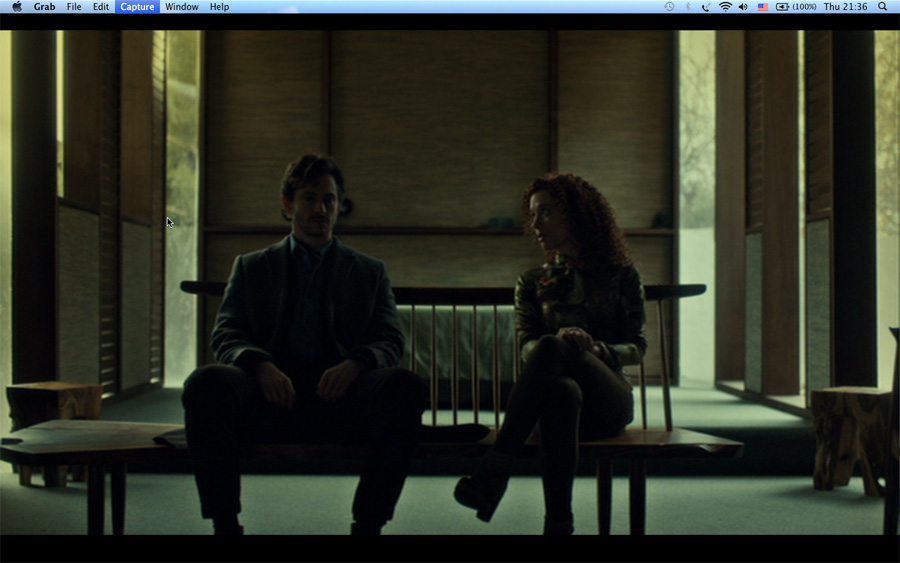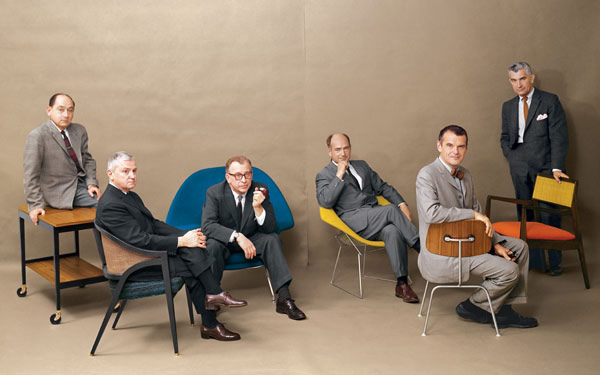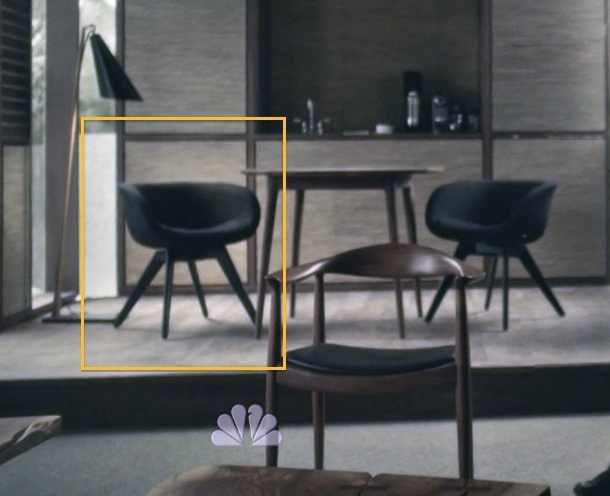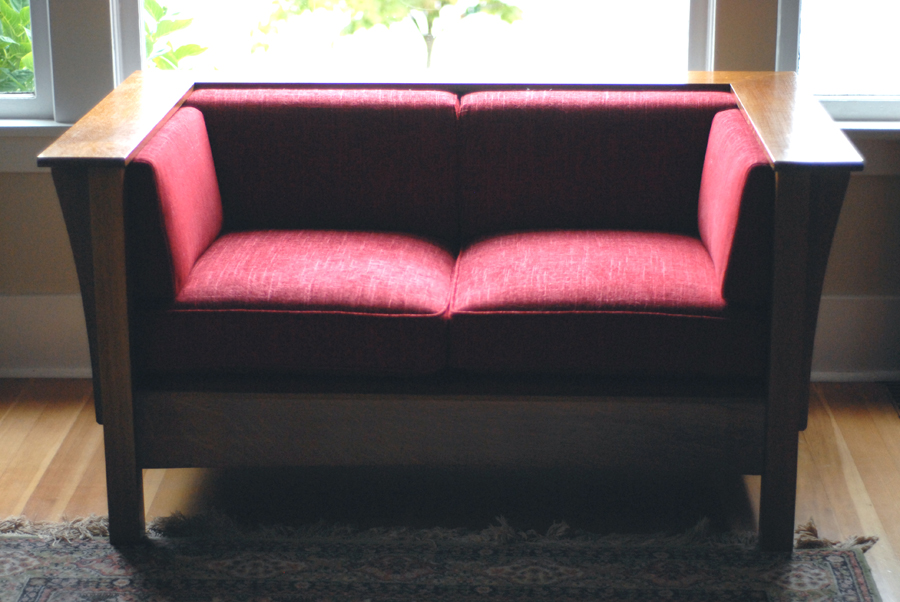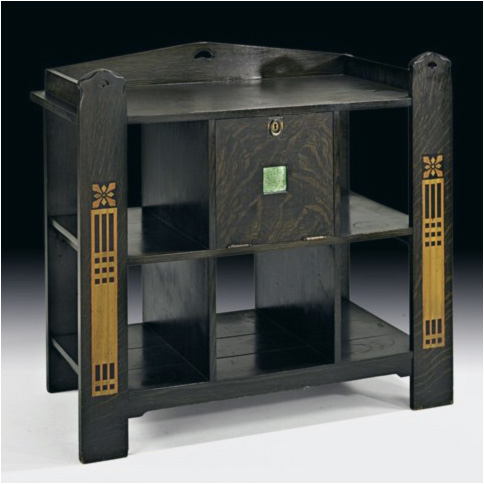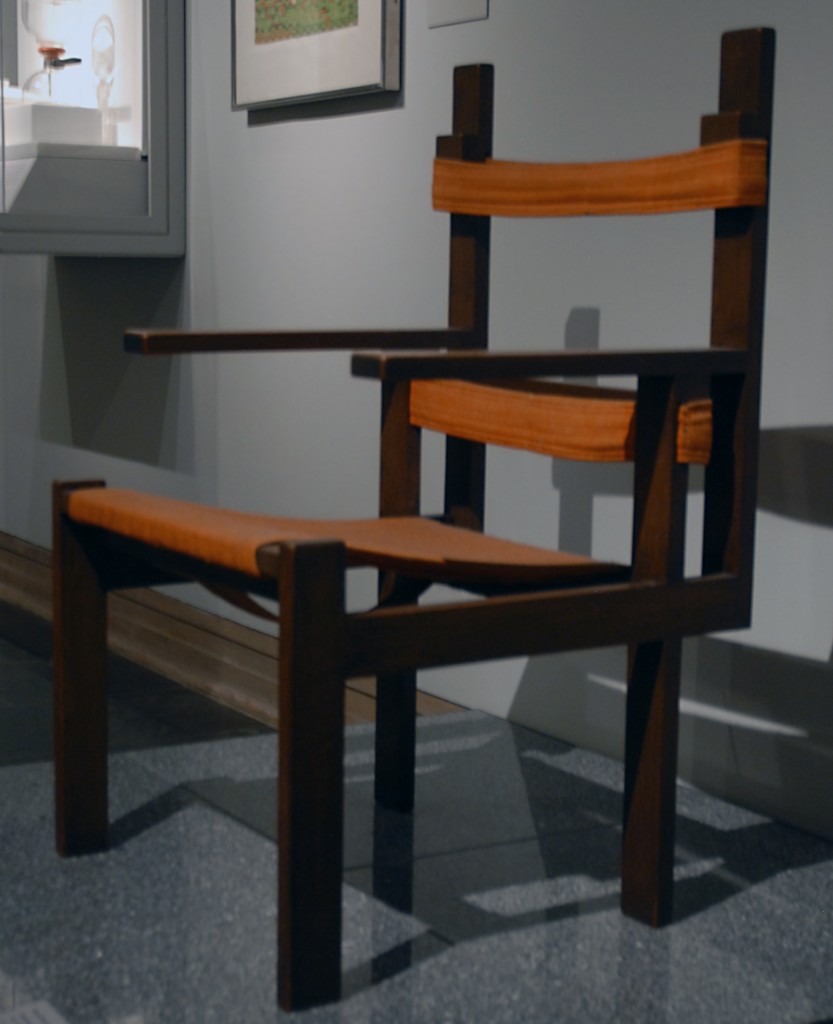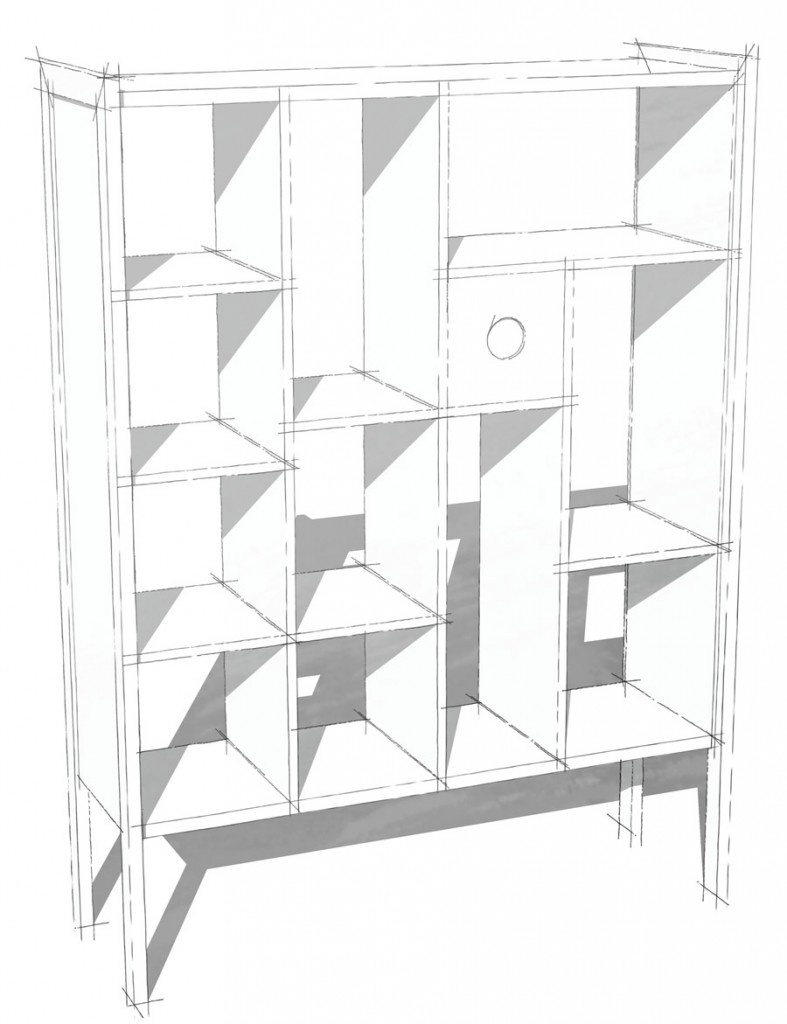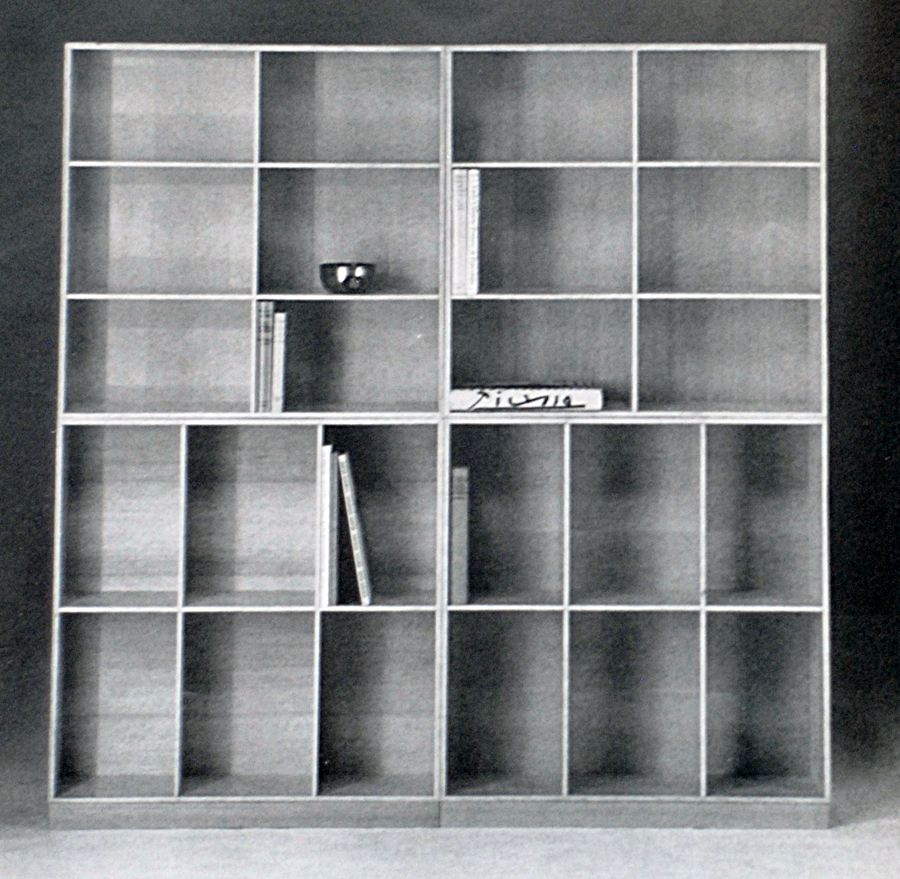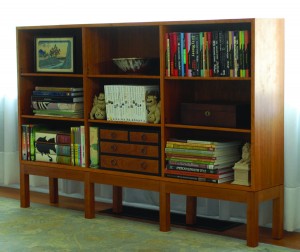
This console variation turns a Mogensen design on its side. See more about the original here.
It’s only after building this variation on a Børge Mogensen design that I fully appreciated the original. Normally I like an apron set back from legs to vary the plane of a base, but here the legs are set flush with the base aprons, and the entire base is flush with sides of the case, presenting what should be a monolith, but the cove along the top of the base interrupts the facade. Too, Mogensen creates variation elsewhere, making the shelves thinner than the case stock and setting the edges of the shelves back from the plane of the case front.
Aside from the mitered case sides, construction was pretty straight forward. Mortise and tenons join the base, which is then coved, and dadoes house the dividers. To cut the miters, I used a large chamfer bit and clamped a fence to the edge of the board to guide the bearing–a simple setup that let me bring the tool to some large pieces of stock and also avoided fussing with a router table. I cut the miters in multiple passes, slowly easing into a finished cut. Sadly cutting the joints was the easy part; glue up proved a little more problematic. For such a large assembly, I couldn’t tape the edges and roll the case up after applying glue. Instead I glued the dividers to the case top and bottom, then glued one side at a time, clamping the side to a diver and using clamps to along the side to bring the miter together. After considering options for base attachment, I drilled some pocket holes in the aprons and screwed the base to the case. Shelf hole liners finish the raw shelf pin holes.
